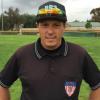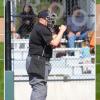Was that a foul ball?
Umpire-Empire locks topics which have not been active in the last year. The thread you are viewing hasn't been active in 2659 days so you will not be able to post. We do recommend you starting a new topic to find out what's new in the world of umpiring.
-
Similar Content
-
- 3 replies
- 631 views
-
- 0 replies
- 1,272 views
-
- 24 replies
- 7,345 views
-
- 16 replies
- 2,885 views
-
- 1 reply
- 1,640 views
-





Recommended Posts